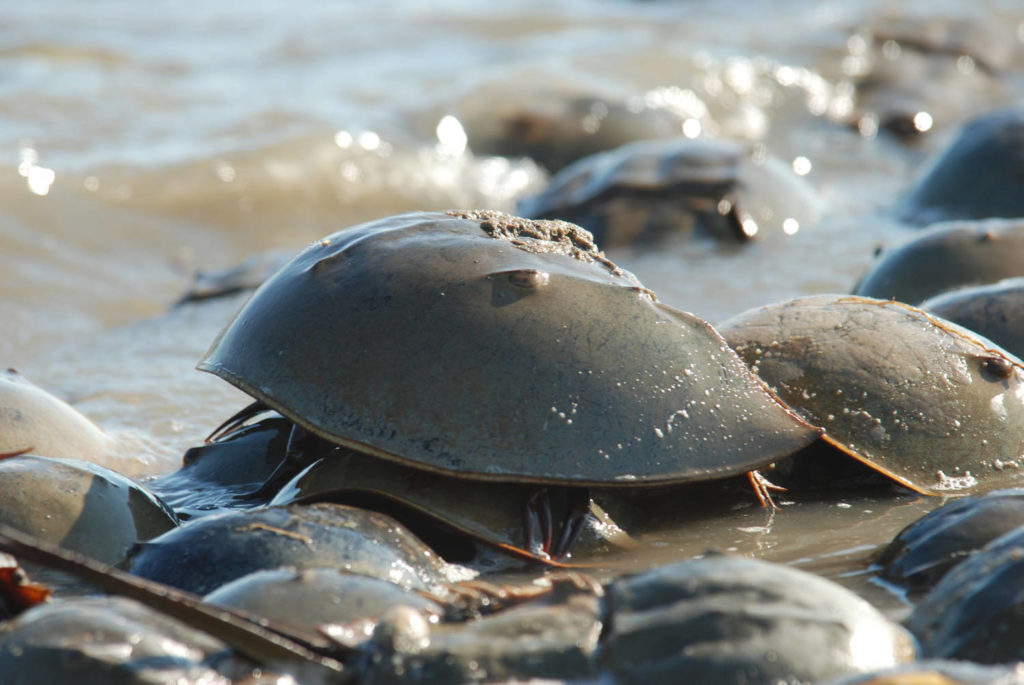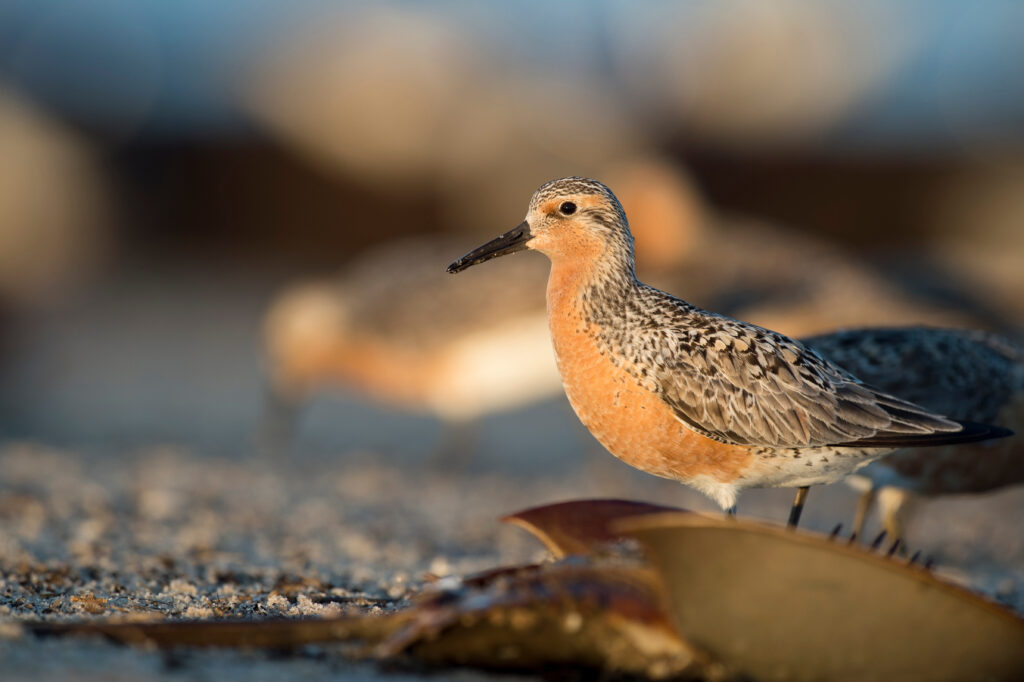Horseshoe Crabs
About Horseshoe Crabs
Horseshoe crabs (Limulus Polyphemus) have been crawling around oceans – essentially unchanged – for over 450 million years, categorizing it as a “living fossil”. These fascinating creatures aren’t actually crabs at all, as they don’t fall under the subphylum “crustacea,” which includes blue crab, spider crabs and other true crabs. They can be found in tidal and subtidal habitats across Long Island inhabiting both brackish and marine waters. They are easy to distinguish by their long slender tail and uniquely shaped large brown shell. Horseshoe crabs prefer muddy bottoms that they can push through to feedi on marine invertebrates.

During the months of May and June, adult horseshoe crabs congregate along the shoreline to spawn. Peak spawning is in conjunction with highest tides of the month, which occur on and around the full and new moons. Various shorebirds, turtles and fish feed off of horseshoe crab eggs.
Many shorebird species, including Ruddy Turnstones and Semi-palmated Plovers, take advantage of the horseshoe crab spawning season, stopping on beaches throughout the mid-Atlantic to refuel on the nutrient-rich eggs during their northbound migrations. One shorebird species, the Red Knot, is particularly reliant on the abundance of horseshoe crab eggs to help them complete their long-distance journey from South America to their Arctic breeding grounds.

Horseshoe crabs themselves are used for bait by commercial fishers and in the past have been over-harvested leading to a plunge in populations. This, alongside habitat destruction, has been a major factor in their decline.
Since 2006, Seatuck has been participating in the annual NYSDEC horseshoe crab survey by counting and tagging crabs at Captree State Park. This effort, together with others across Long Island, helps to monitor our local horseshoe crab population. To learn more about how you can join the effort, click here to visit our calendar for upcoming horseshoe crab monitoring nights at Captree. And click here to learn how you can use our “Horseshoe Crab Tracker” community science tool to help us learn where horseshoe crabs are active.
